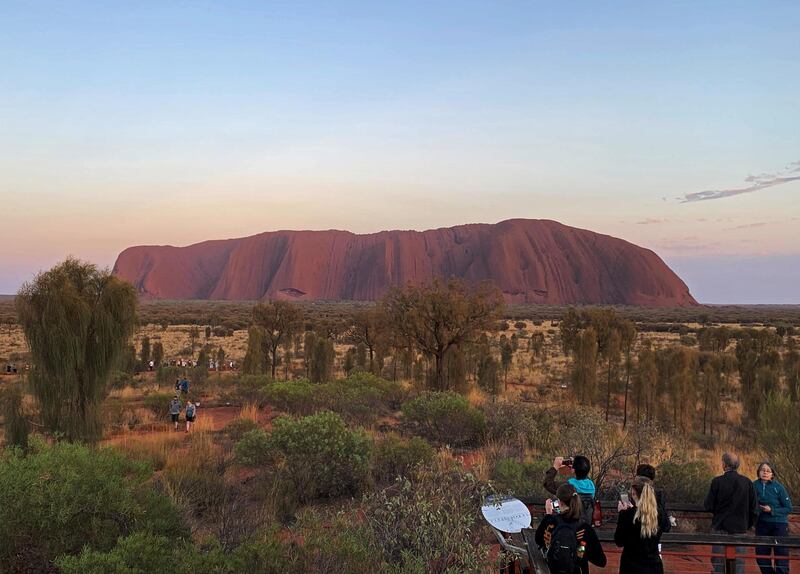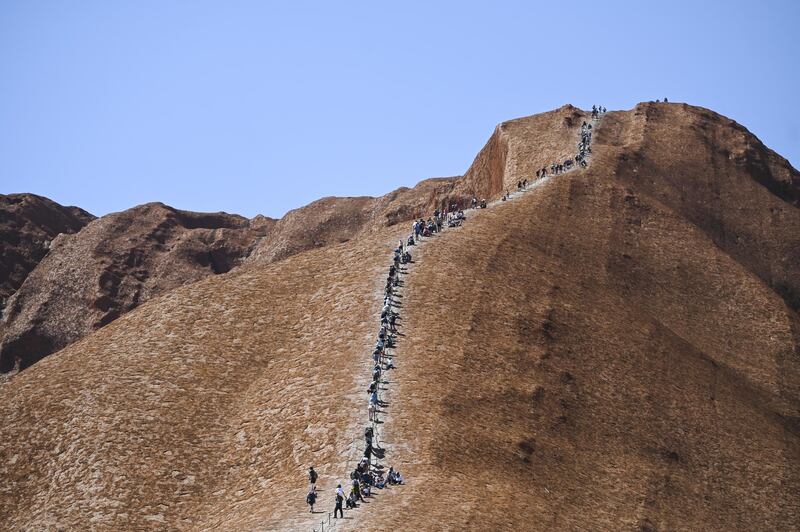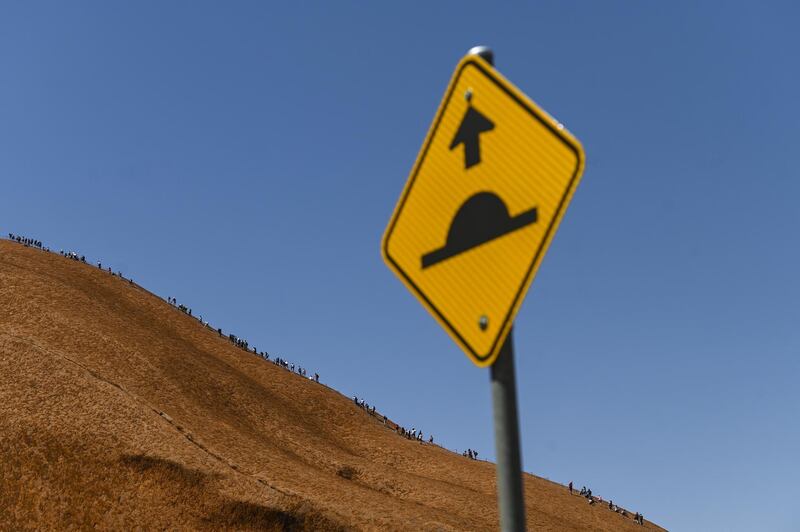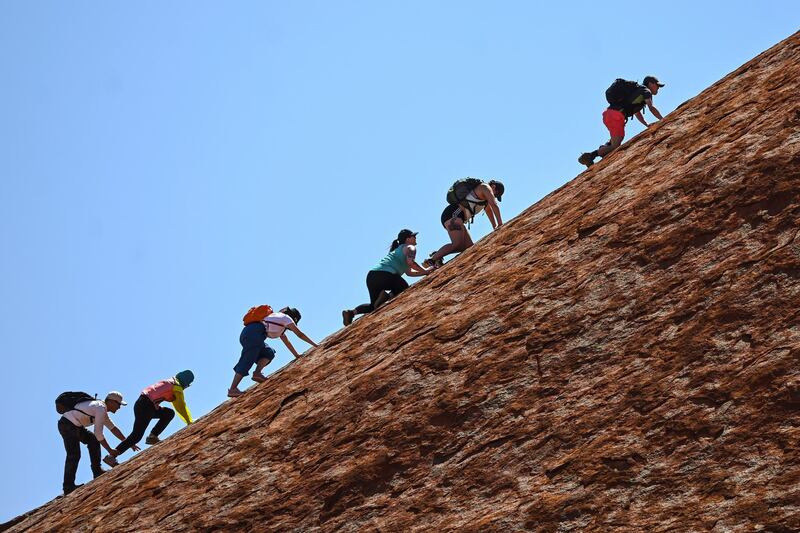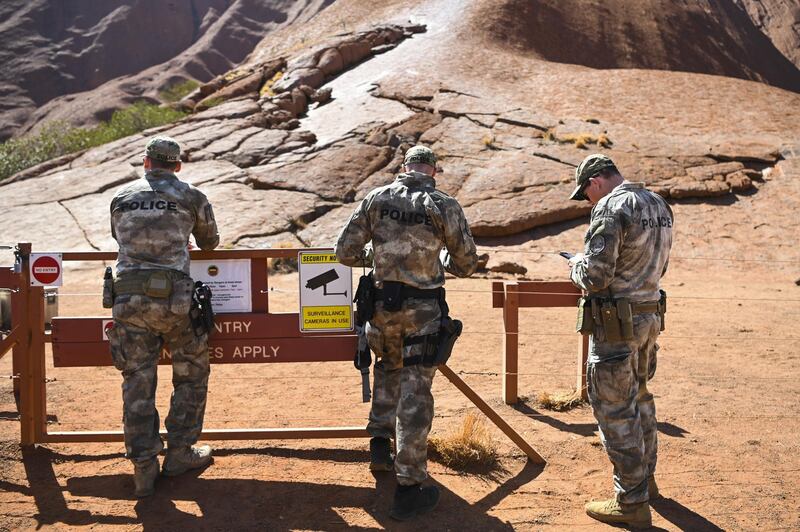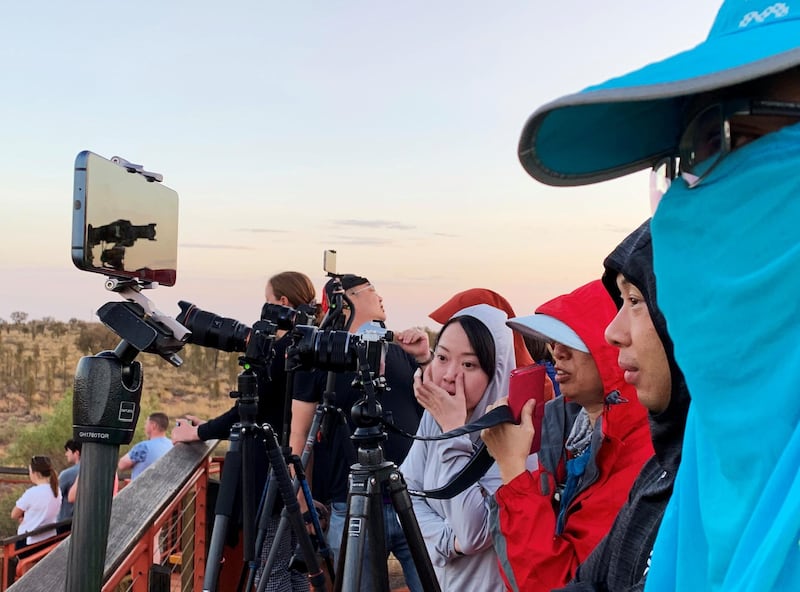Hundreds of tourists queued to climb Uluru for the last time on Friday ahead of a climbing ban which came into place as the sun set over the sacred red rock.
From Saturday, October 26, 2019, climbing the Unesco World Heritage-listed structure will no longer be possible as a climbing restriction comes into effect.
The prohibition comes exactly 34 years after the land on which Uluru sits was handed back to the indigenous Anangu people, who have called for the climb to be closed ever since.
Heavy winds on Friday morning did nothing to discourage those people intent on scaling the giant structure. Videos on social media showed long lines of climbers waiting to make the ascent.
One day out from Uluru climb closure, this is the line at 7am. pic.twitter.com/fxs344H6fV
— Oliver Gordon (@olgordon) October 23, 2019
Park rangers allowed climbing to commence around 10am, once the windy weather had calmed.
The closure comes after a period of tensions for the Anangu people, who faced an increase in the number of visitors arriving intent on climbing the rock against their wishes.
In the twelve months leading up to the closure, Uluru-Kata Tjuta National Park has welcomed nearly 400,000 people - a 20 per cent rise in tourist arrivals compared to last year, according to government figures.
A sign at the bottom of Uluru reads: "Please don't climb. We the Anangu traditional owners have this to say. Uluru is sacred in our culture. It is a place of great knowledge."
The indigenous people have been calling for the trek to be closed since 1985. Climbing the structure is not permitted in their culture, yet until the last gasp people continued to try to summit the rock.
Photos of crowds snaking their way up the structure have prompted anger on social media. One Instagram user captioned an image of Uluru: “I don’t understand the staggering arrogance of people who think that they know better than the indigenous people, and climb it anyway.?”
The traditional owners of Uluru have a connection to the rock that goes back at least 30,000 years. They were evicted from the site in the early 1960s by tourist operators and fought to reclaim their land for two decades.
While the climb will no longer be legal after today, there are many other ways tourists can enjoy the region and do so in a way that is culturally sensitive.
Marvelling at the rock from afar or taking in the geological wonders of it on the 10-kilometre walk around its circumference are highlights. There are also cultural tours, ranger-guided mala walks and dot-painting workshops on offer in the area.
